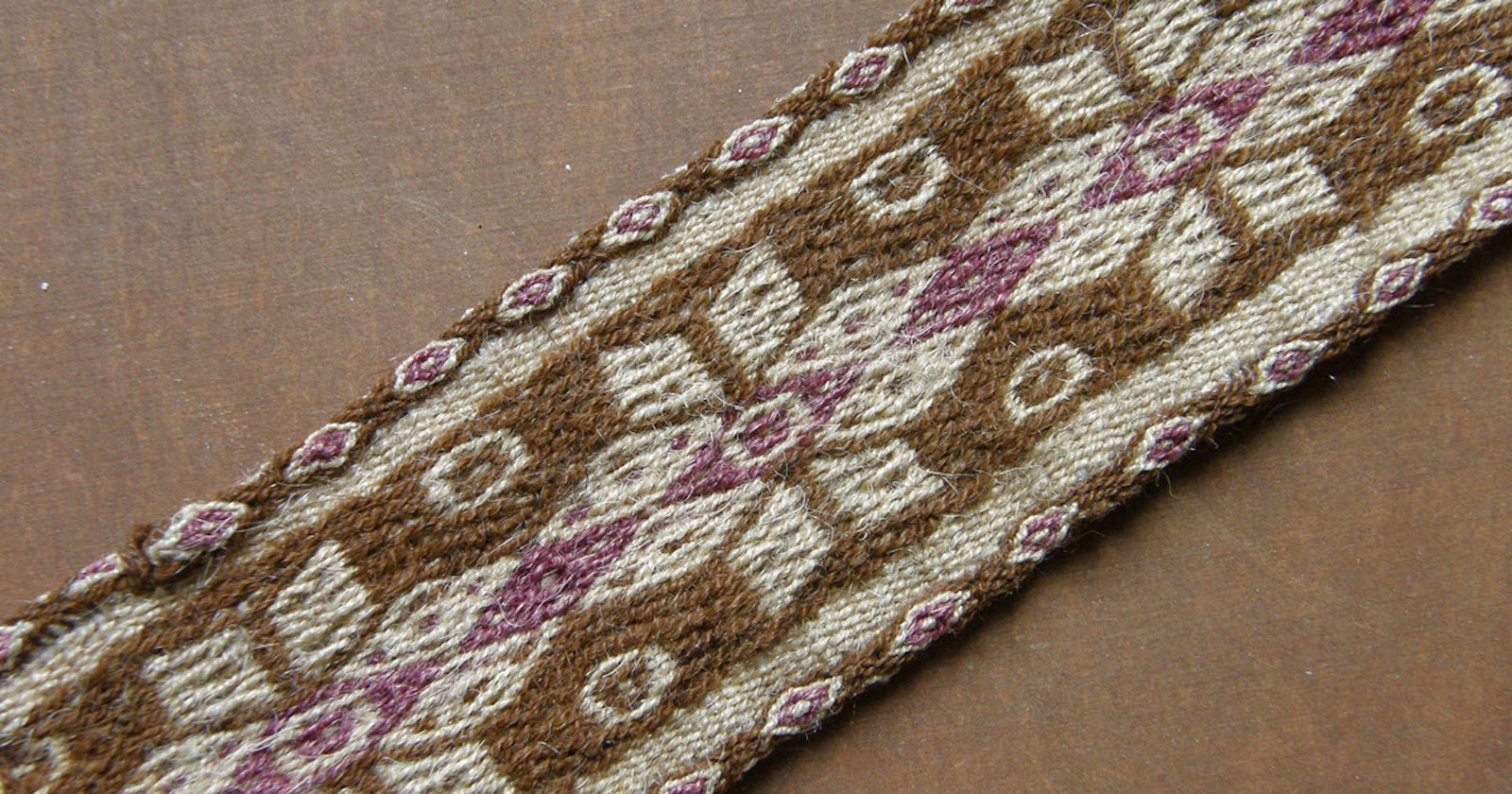Editor’s note: Frequent Spin Off contributor Devin Helmen says, “I have always been a spinner, first and foremost—only afterwards a knitter and later a weaver.” Devin’s weaving journey has always been handspun focused. In the Summer 2019 issue of Spin Off, Devin asked three weavers about their own handspun, handwoven work, and here is Laverne’s story.
I bought a big sack of llama fiber from a woman while I was wandering the back roads in highland Bolivia and learning more about spinning back in 2002. The llama was dry, brittle, filthy stuff, but I didn’t know any better. It was a struggle to clean and prepare and it gave me asthma. I spun and plied it and began weaving. Then I dyed some of it with cochineal and spearmint leaves and wove some more. It was high-energy, gnarly stuff. But I just loved the fact that the fiber from that rough old llama living in those tough, dusty conditions up in the highlands became yarn and then some pretty decent cloth.
I have found that warp-faced weaving is extremely flattering for one’s handspun yarn. I look at things that I have woven with my handspun llama and alpaca fiber and can’t believe that the yarn came from my hands. When the threads are placed as close together as they are in warp-faced textiles, differences in girth and twist are no longer apparent; everything looks wonderfully even.
 Handspun cotton woven into a sheer cloth. Weaving and photo by Laverne Waddington
Handspun cotton woven into a sheer cloth. Weaving and photo by Laverne Waddington
Traditional warp-faced woven textiles often have a high-twist warp. However, I soon found that yarn does not need to be overtwisted to stand up to the abrasion of warp-faced weaving. The first time I was given some beautifully prepared alpaca to spin, it slipped through my fingers with buttery smoothness—almost like cheating after that tough llama! I felt it would be a crime to put hard twist into the yarn, so I spun it as a softer, balanced yarn. You do need to know how to operate a backstrap loom well to deal with this. The warp needs to be advanced as often as possible so that the heddles and rods are not sitting on any one spot for too long. You need to use the gentlest possible method to raise the heddles and open sheds. Also, you need to get used to the fact that sheds will not open cleanly; extra-gentle effort is needed to clear them.
I haven’t gone much further with spinning wool or other fibers for my weaving. The process is beautiful, but I never got the same feeling of connection to this land I live in by using beautifully cleaned and prepared fiber that had been given to me by friends or that I have bought at yarn stores or fiber fests. I think that connection is what using handspun brought to my weaving.
Read more from Laverne, Sara Lamb, and Kristin Merritt in Devin Helmen’s article, “Honest Cloth: Spinners on Weaving with Handspun” in the Summer 2019 issue of Spin Off.
Additional Resources
- Give backstrap weaving a try with this free pattern download that includes set-up instructions: “Backstrap Bandweaving with Pick-up”
- As a nod to bandweaving, we’ve collected seven of our favorite bandweaving articles and projects together into this collection: Bandweaving Using Rigid Heddles and Inkle Looms eBook
Also, remember that if you are an active subscriber to Spin Off magazine, you have unlimited access to previous issues, including Summer 2019. See our help center for the step-by-step process on how to access them.
Laverne Waddington has been learning to weave on various kinds of simple looms with indigenous teachers in South America since 1996. In her home in Santa Cruz, Bolivia, she combines elements of ethnic design and her own original patterns to create unique pieces on a backstrap loom. She shares her experiences on her blog, backstrapweaving.wordpress.com, as well as via various instructional publications available at taprootvideo.com.
Originally published June 25, 2019; updated September 11, 2023.

